The countermarch loom is known for having a clean shed, so that is my goal. Is that possible for ten shafts and ten treadles? The first treadle I step on reveals that treadle cord adjustments are definitely needed!
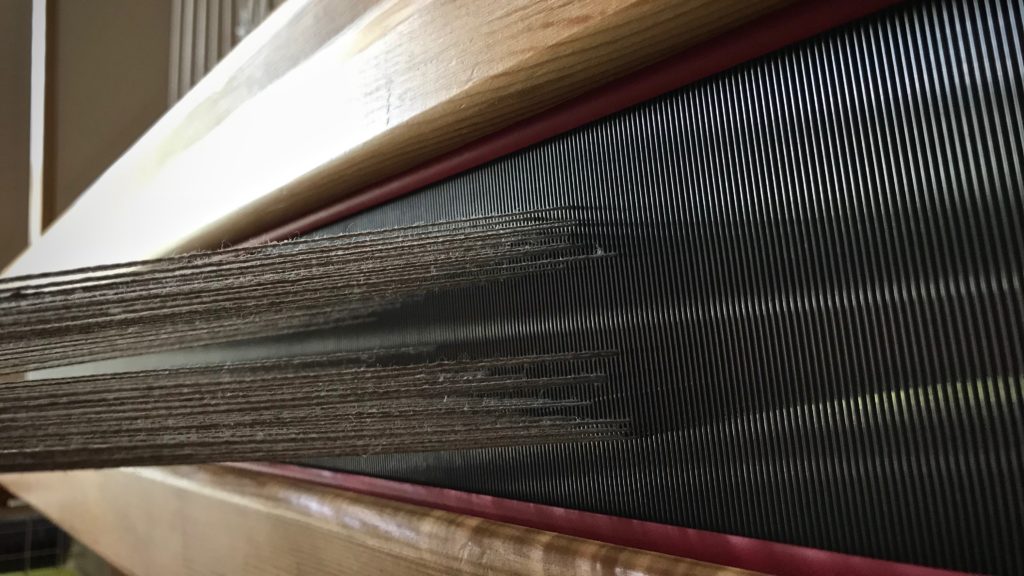
I learned the basics of making adjustments to treadle cords from Learning to Warp Your Loom, by Joanne Hall, and The Big Book of Weaving, by Laila Lundell. I also gained valuable experience from Vävstuga Basics, with Becky Ashenden.
Here’s how the process looks for me, with this ten-shaft, ten-treadle project as an example.
I keep the following note on my iPhone. It helps me remember how things work.
I fill in the blanks for each treadle, noting which shafts are too high or too low. Then, using my iPhone note for reference, I make the needed adjustments.
- The first time through, I am primarily interested in the bottom of the shed. I make adjustments to clear the shed enough to be able to weave a little bit.
- Weave an inch or two. It is surprising how the shed cleans up with a little bit of weaving.
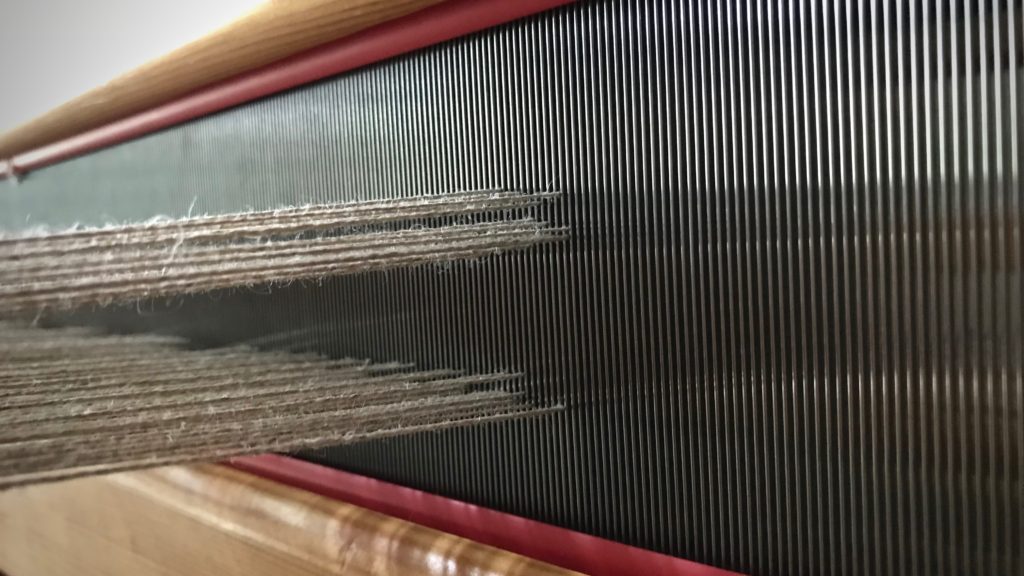
- After weaving that first inch or so, I go through a second, and a third time, if needed, to get a clean shed on each treadle. Adjustments for the top of the shed are only needed if there are threads that will interfere with the shuttle.
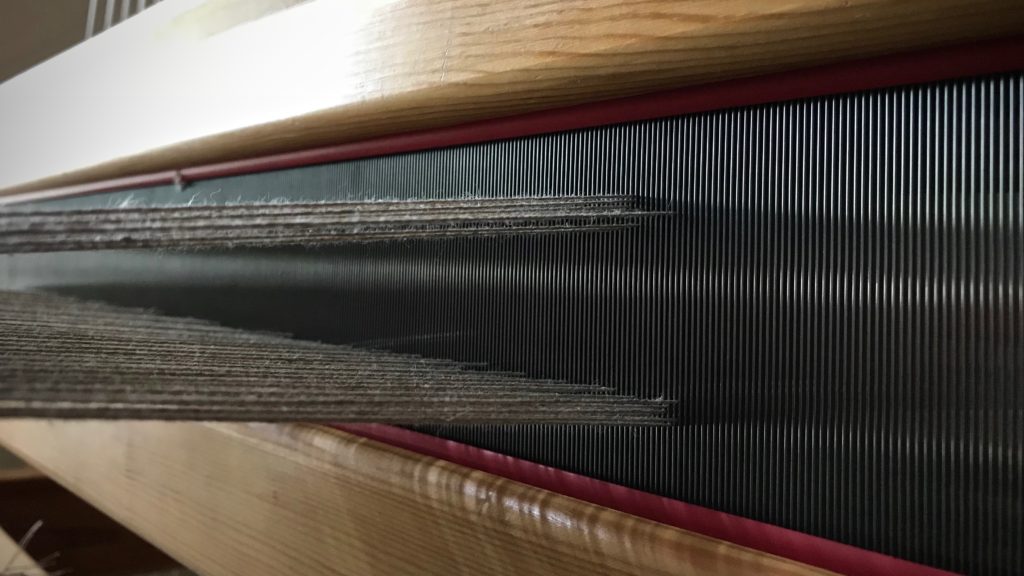
When I first see a messy shed, I think, “How will I ever get my shuttle through that?” But it turns out to be little adjustments here and there. It’s not too difficult if you understand the loom.
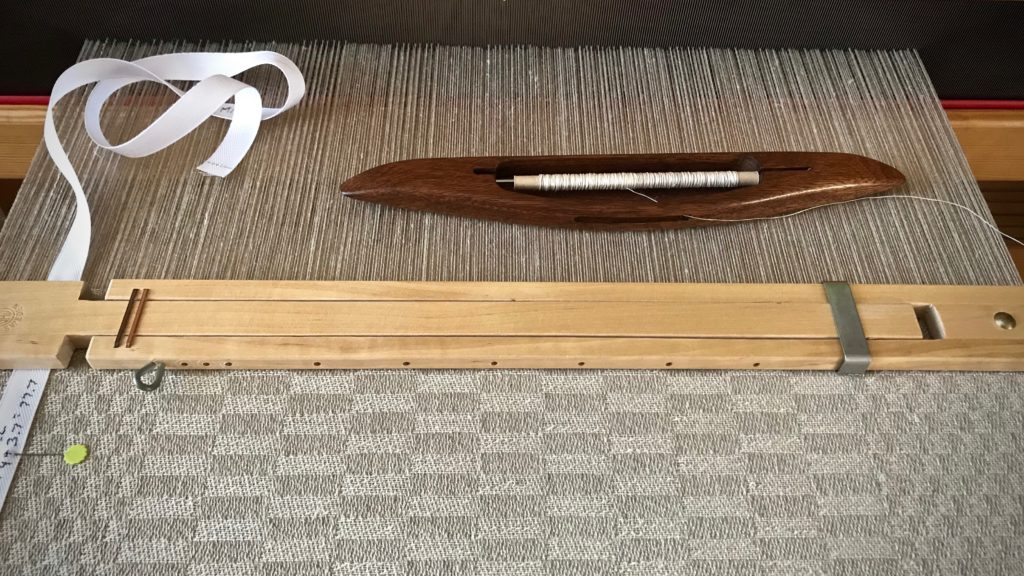
Nothing is too difficult for the one who made heaven and earth. Our Creator knows how to help us. He hears our prayers for help, and little by little, we see what He is doing as the shed clears and the shuttle glides through, unhindered.
May little adjustments clear the way for you.
With you,
Karen

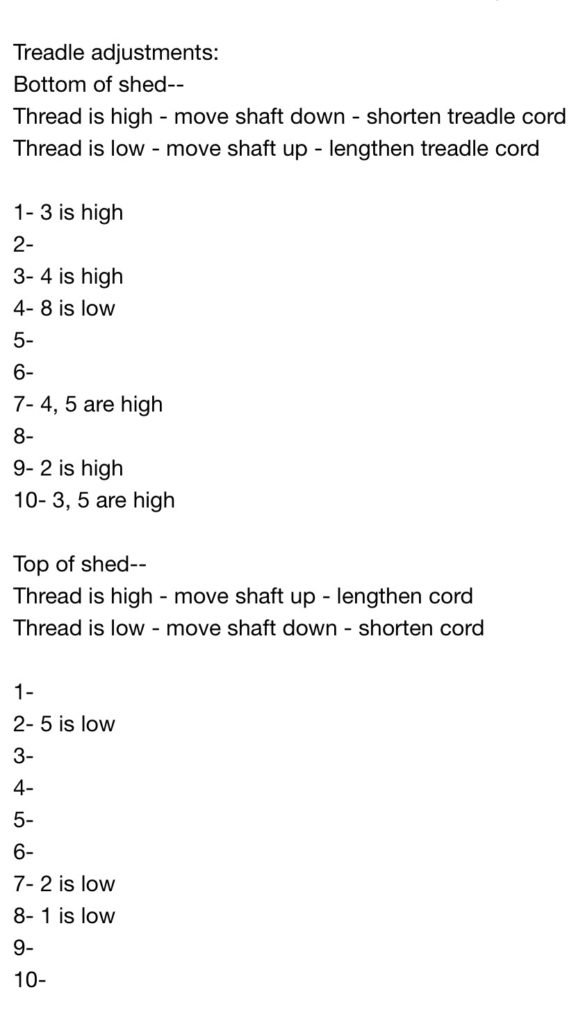
Thank you! I’m bookmarking this. I was recently gifted an old Toika countermarch and I’ve only worked with jack-style looms. This will be invaluable to me as I begin learning!
Hi Cathy, I am excited for you! I hope you enjoy your new countermarch loom as I do mine. Let me know if you have any questions along the way as you get going.
Happy Weaving,
Karen
Thanks Karen! If you don’t mind, I think I will copy your notes to keep handy in my studio. I am hoping the same type adjustments will work with my ten shaft counterbalance loom. Getting under my loom is the hardest part for me. It’s like playing in a jungle gym! Hopefully your notes will simplify the tie-up process. I have a six shaft weave to tie up today and will try your procedure.
Hi Jenny, The process should work for you with your counterbalance loom. You’ll just have fewer tie-ups. It’s always exciting to start a new project!
Here are the notes. You should be able to copy and paste from here. Let me know if this doesn’t work for you.
Treadle adjustments:
Bottom of shed—
Thread is high – move shaft down – shorten treadle cord
Thread is low – move shaft up – lengthen treadle cord
1- 3 is high
2-
3- 4 is high
4- 8 is low
5-
6-
7- 4, 5 are high
8-
9- 2 is high
10- 3, 5 are high
Top of shed—
Thread is high – move shaft up – lengthen cord
Thread is low – move shaft down – shorten cord
1-
2- 5 is low
3-
4-
5-
6-
7- 2 is low
8- 1 is low
9-
10-
Happy weaving,
Karen
I agree with Cathy M — for a beginner like me, this post will help me get those wonderful sheds the countermarch is known for. My first warp looked like the picture you showed, and I was overwhelmed. Thanks also for including the references: I have both books and will look at them again.
Hi Marjorie, I’m so happy you are persevering through the learning stages! It’s all downhill from here. 🙂 I know that overwhelming feeling. Those two books have been steady references and friends for me to help solve all sorts of problems.
I’d love to hear about your clean sheds the next time you put on a new warp!
Happy weaving,
Karen
Karen, I hate to bother you, but I tried saving your form, but is is like a photo, so I can’t edit it would you mind e-mailing a copy to me? Thanks!
Hi Jenny, See my response to your previous comment.
Karen
As I was reading this post, I thought that living life is very much like adjusting the shed/treadles. When things aren’t going well, sometimes we just need to patiently figure out which area is where the problem actually lies and then start with small adjustments in that area only to solve the problem.
I often need to be reminded of this as I tend to want to scrap the entire project!
Have a blessed weekend, Karen. And I am also keeping the notes you created for my future loom. Thank you for sharing!
Annie
Annie, Yes, that’s a great reminder to me, too. Those small adjustments can make a world of difference!
I appreciate hearing your thoughts.
All the best,
Karen
Hello Karen
Thank you for your clearly written help. I was given a beautiful Glimåkra Countermarch loom a couple of years ago and I’m learning something new every time I weave another project.I have noticed a horrible shed where pressing one treadle – on my current 4 shaft project. I didn’t know where to begin with making adjustments -from the top or at the treadles. I shall follow your advice and try to make some small adjustments with the treadle cords.
Susie
Hi Susie,
It doesn’t hurt to start from the top. A while back, after adding some shafts, I had a terrible time getting a good shed. I was pulling my hair out until I finally looked closely at every cord, starting at the top. I found two cords from the jacks that were crossed and connected to the wrong shafts. That solved everything! 🙂 Also, sometimes a poor shed is actually an indicator of crossed warp ends somewhere. What I have learned is that there is always a solution! But often, it takes a little bit of detective work.
I’d love to hear how your shed dilemma works out!
All the best,
Karen
Karen, your post comes at the most opportune time for me as I’ve just spend the better part of today pretending to be a pretzel under the new loom trying to make sense of a million cords and lamms only to find a shed looking very much like your top picture as my results . I have read and reread the books you mentioned and was just going to begin the process of finding where I needed to make adjustments when I read your process here and it all clicked! I’ve added your process to my phone as well and will attempt to work through each step as you noted in the morning. Thank you again!!
Charlynn
Hi Charlynn, It does take some time to learn how it all works. It gets easier the more you do it. I’m glad this post came at a good time for you! Hopefully, you are very close to smooth sailing.
All the best,
Karen
Thank you! I have been weaving for 20 years, but every time I go to tie up my Glimakra Ideal, I pause. I sadly think I have gotten good sheds by sheer angelic intervention more than wrapping my head around it. Your notes are going into the studio tomorrow!
Hi Nettie, Hopefully this takes some of the mystery out of the tie-ups for you. I’m so glad you found this information helpful!
Happy weaving,
Karen
If it is the top of the shed that seems to be adjusted wrong, is it still the treadle cords that need adjusting?
Hi Deb, If the top of the shed needs adjusting, yes, you would adjust the treadle cords. If the threads at the top of the shed are too high, lengthen the cord. If the threads at the top of the shed are too low, shorten the cord.
However, I often leave the top of the shed as is, unless the threads are interfering with the shuttle.
I hope that helps.
Karen
Thanks, Karen!